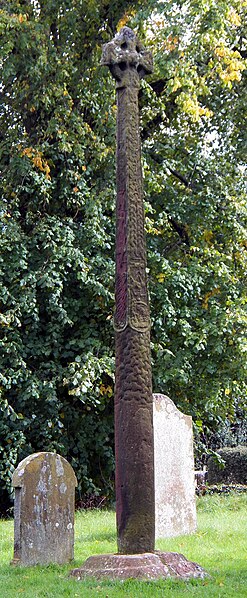The Gosforth Cross is a large stone monument in St Mary's churchyard at Gosforth in the English county of Cumbria, dating to the first half of the 10th century AD. Formerly part of the kingdom of Northumbria, the area was settled by Scandinavians some time in either the 9th or 10th century. It has gained reputation for its combination of Christian symbols with Nordic symbols, being a tangible piece of evidence of the impact of the Christianization of Scandinavia.
Gosforth Cross, view from the north west
Gosforth Cross outside St Mary's church in Gosforth. From the SW
Víðarr's battle with Fenrir at Ragnarök.
View of the Viking Cross and church, from the SE
St Mary's Church, Gosforth
St Mary's Church in the village of Gosforth, Cumbria, England, is an active Anglican parish church in the deanery of Calder, the archdeaconry of West Cumberland, and the diocese of Carlisle. Its benefice is united with those of St Olaf, Wasdale Head, and St Michael, Nether Wasdale. The church is recorded in the National Heritage List for England as a designated Grade I listed building. It is associated with "a unique Viking-age assemblage" of carved stones.
West end of St Mary's Church, Gosforth, with the Gosforth Cross standing to the right of the porch
Gosforth Cross
Interior view of St Mary's church, Gosforth, Cumbria.
Hogback tombs in the church







